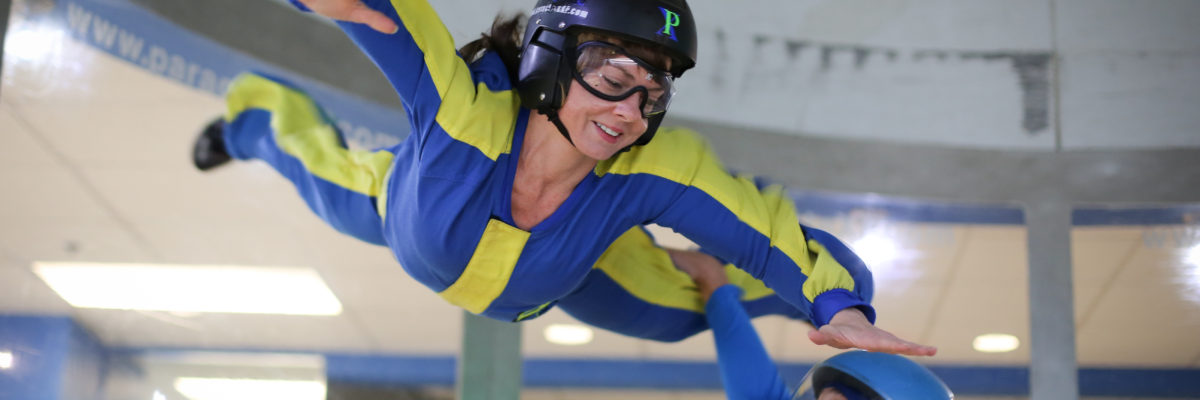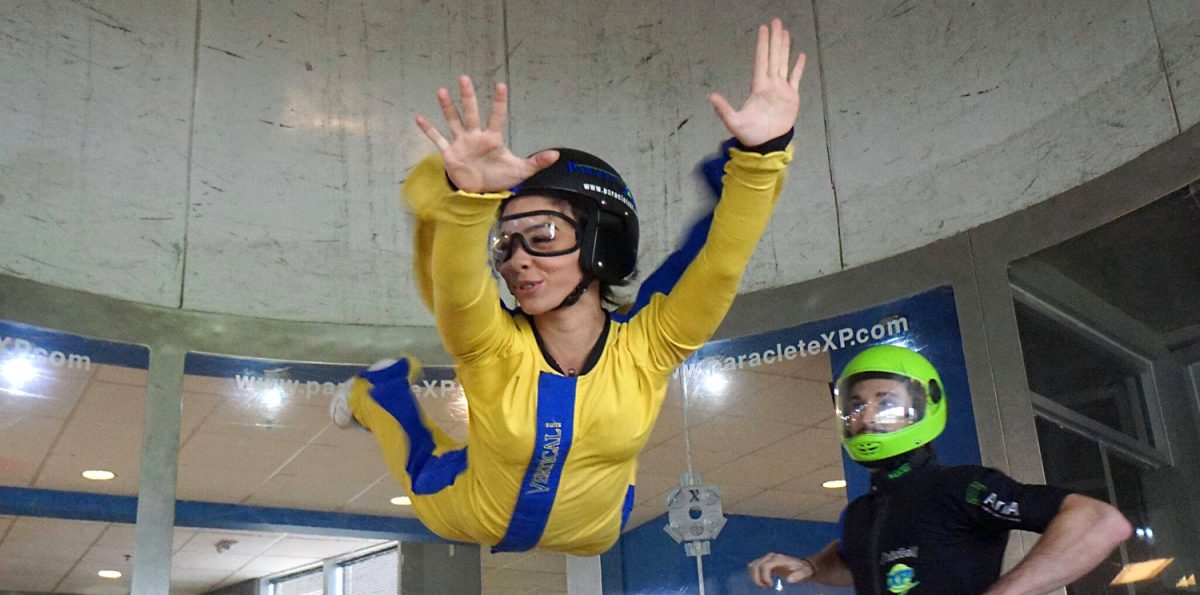
Skydiving Simulator: Everything You Should Know
Friday, October 19, 2018
- Team XP
- 10/19/18
- 0
- Indoor Skydiving, Skydiving
Biting your nails a little (or a lot) at the prospect of exiting the open door of an aircraft zooming miles over the landscape? Boy howdy, do we ever understand! Skydiving is scary for most people, and for good reason. After all: if you’re the kind of person who likes to limit variables when you try new things, the idea of:
- Taking off in a small plane
- Wearing unfamiliar equipment to save your life
- Securely harnessing yourself to a person you’ve never so much as met
- Walking to the door of a flying plane
- Getting out of that plane in aforementioned equipment with the aforementioned stranger
- Learning how to fly your body in the airflow
- Watching (and feeling) as a parachute deploys
- Remembering your training and landing
…Okay, that’s eight ideas. Yikes! Anyway, the combined idea of doing all that can (and, arguably, should) spook you a bit.
What if we told you there was a way to have a perfectly ecstatic experience while reducing that number down to one? O happy day, but there is. These days, more and more people are choosing to have their first freefall experiences in the vertical “indoor skydiving” wind tunnel, also referred to by some old-timers as a “skydiving simulator.”
If you’re unsure jumping from a plane is for you, a skydiving simulator (also known as “indoor skydiving”) is almost certainly your ticket to freefall–at least, for the first few times. Here’s what you should know!

1. Pretty much anyone can do it!
Bring the whole family! Unlike “outdoor” skydiving, which has a strict lower age limit of 18, the indoor version (in the “skydiving simulator”) can be done by adventurers from the age of 2 to 92. There are a few health considerations, but they’re pretty straightforward and common-sense: to fly, you must not be pregnant, have any prior shoulder dislocations, wear a cast, or be under the influence. You also shouldn’t have a history of neck, back, or heart conditions. As to indoor skydiving weight limits: If you weigh over 250, please do give us a call to discuss the booking.
2. It’s like skydiving, but without the really scary bits.
Remember that eight-point list up there? Yeah, buddy! Skydiving can be a lot to wrap your mind around. Here’s the trick, though: Your fear of skydiving and your fear of the unknown are exactly the same thing. They’re twins. If you fight down one, you’re well on your way to winning the war with the other adversary. The magic is that fear of the unknown dissolves once something is known. It follows, then, that spending some time in the tunnel will help your body and mind acclimatize to the new-and-spooky noises and sensations of skydiving, so once you get out there for your first tandem skydive (at Paraclete XP, naturellement!) it’ll be that much easier to cut loose and just enjoy yourself…and it’ll be that much easier to slay your general fear of the unknown, which will be a massive personal coup. Right?
3. It’s highly addictive — and that’s a good thing.
Many people come to the “skydiving simulator” just because it provides a useful simulation of skydiving. Yup! But, beyond that, while pretty much all of the skills and body positions you’ll learn here carry directly over into skydiving, the reason most people return over and over again to indoor skydiving is because it’s the most addictive kind of fun. You’ll be sure to to leave with a smile — and it won’t be long before you return with the rest of your tribe.
What’s the upshot? Well: Flying in a skydiving simulator like Paraclete XP is the perfect way to bridge the gap between indoor skydiving and actual skydiving, and it’ll take the “eek factor” right out! Make your reservation today.

I surprised my kids today with a flight. At first they were worried but after they went through the instruction and their 1st flight they had a great time. They smiled for hours after we left. Instructors were very knowledgeable and friendly. This was well worth the drive and cost involved. We will be back. Thank you for being a great place to take kids. Keep up the good work.
James Griffin
Copyright © 2025, Paraclete XP Indoor Skydiving, All Rights Reserved.
DropZone Web Design & Marketing by Beyond Marketing, LLC